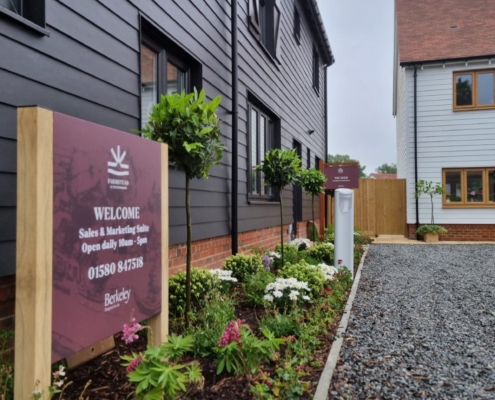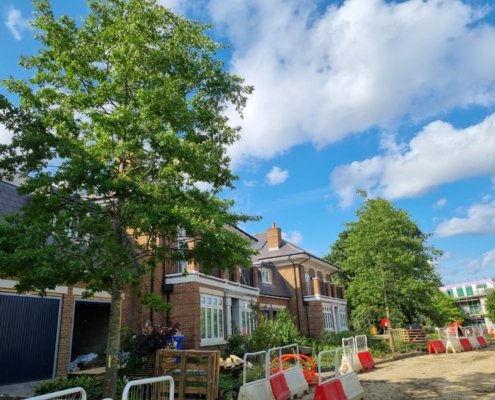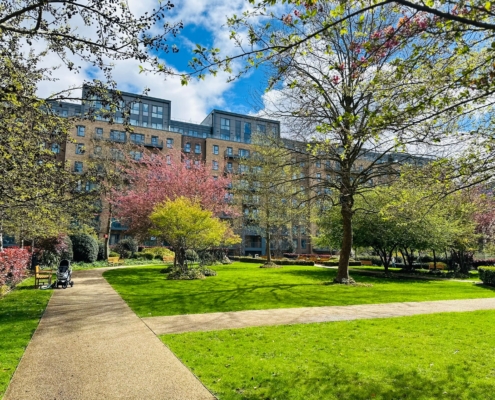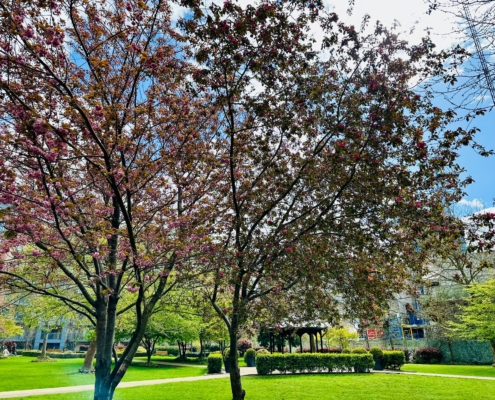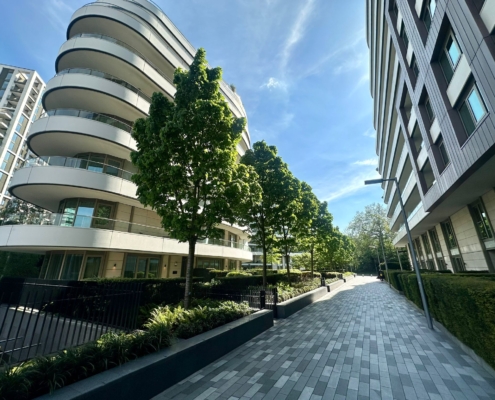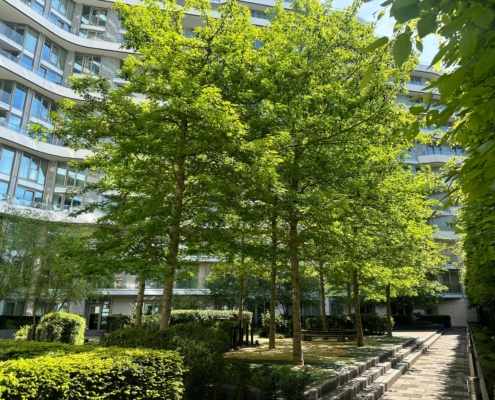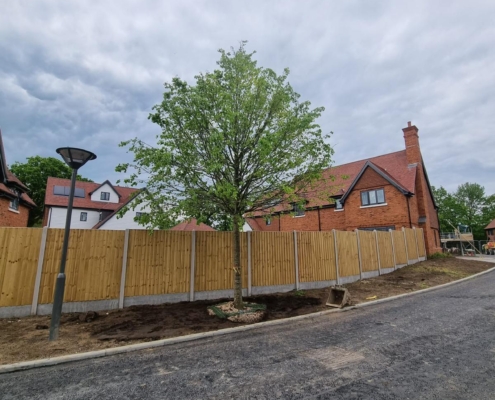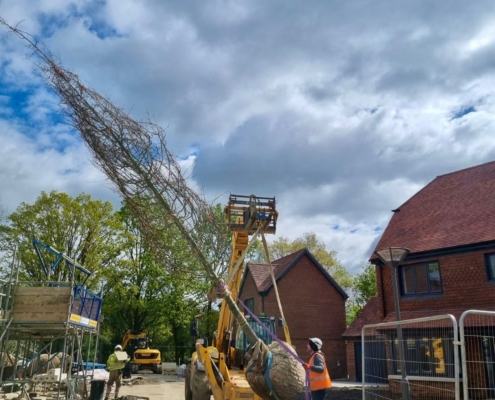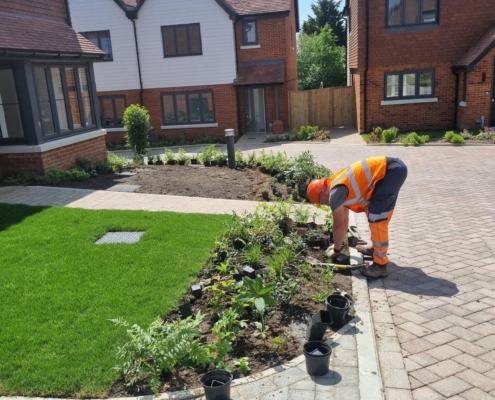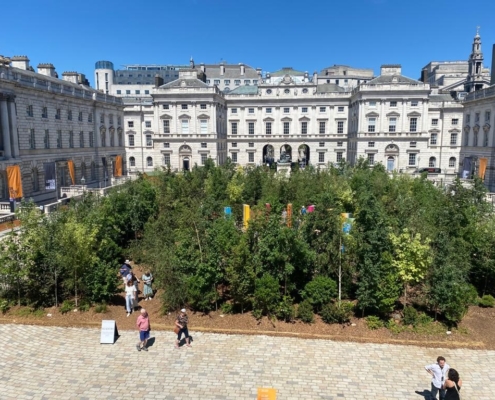Why maintaining gardens in the built environment matters?
Great landscape maintenance for mixed-use residential gardens in London offers a wide range of benefits, enhancing both the aesthetic appeal and practical functionality of these spaces. These gardens are a key feature in urban developments, often blending residential and commercial elements. We are fortunate enough to maintain some excellent gardens in the heart of our capital and enhance these green oasis for residents and building users. We pondered why maintaining gardens in the built environment matters?
Improved Aesthetic Appeal
- Curb Appeal and Property Value: Well-maintained gardens add significant visual appeal, which can increase the value of properties and attract potential tenants or buyers. Clean, beautiful landscapes make a great first impression.
- Cohesive Design: Regular maintenance ensures that the original landscape design stays intact, with plants kept healthy and vibrant, adding to the overall harmony of the space.
- Seasonal Interest: Proper maintenance incorporates the use of seasonal plants and flowers, which helps keep the garden dynamic and visually interesting throughout the year, making it an attractive space in any season.
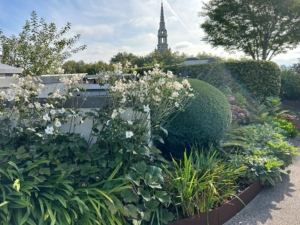
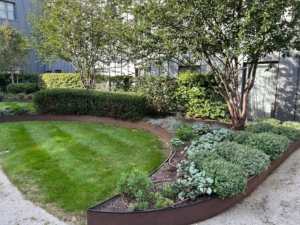
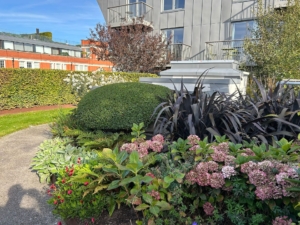
Enhanced Environmental Quality
- Air Quality: Plants act as natural air purifiers by absorbing pollutants and releasing oxygen, which improves air quality in dense urban environments like London.
- Urban Biodiversity: Well-maintained gardens support biodiversity, providing habitats for birds, bees, and other wildlife. This contributes to London’s ecological network, helping sustain local flora and fauna.
- Stormwater Management: Thoughtful landscape design can help manage rainwater runoff in urban areas, reducing the risk of flooding. Permeable surfaces and well-cared-for plants improve water absorption and drainage, keeping car parks, pathways and roads usable and safe.
Community Well-being and Social Interaction
- Mental Health: Access to well-maintained green spaces has been proven to reduce stress and anxiety. Green, lush environments can act as a calming retreat for residents and visitors in the midst of a busy city.
- Physical Activity: Landscaped gardens encourage residents to engage in physical activities like walking, gardening, and outdoor exercise, which promotes a healthier lifestyle. New build schemes in London particularly focus on the work, live, play mentality and are designed to enable healthy living.
- Community Bonding: Beautifully maintained communal gardens serve as shared spaces where residents can interact, fostering a sense of community and social cohesion.
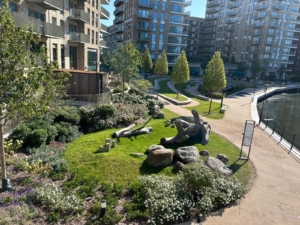
Increased Usability and Functionality
- Safe and Accessible Spaces: Regular maintenance ensures that gardens remain safe for use, with clear paths, well-maintained play areas for children, and properly managed plants that do not obstruct walkways or spaces.
- Multi-Functional Use: Thoughtful maintenance keeps these spaces flexible for multiple purposes, from relaxing and leisure to events and gatherings. Well-kept lawns, seating areas, and planting zones maximize the potential for different types of use.
- Sustainable Urban Living: Gardens in mixed-use developments offer respite from the dense urban environment, enhancing the liveability of residential spaces. Residents can enjoy a blend of natural and urban lifestyles.
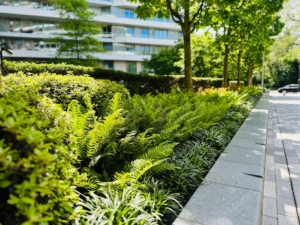
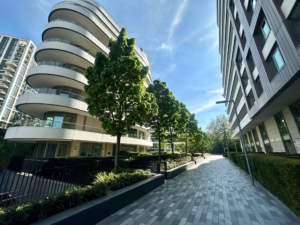

Energy Efficiency
- Natural Insulation: Strategic planting and garden design can act as insulation for buildings. Trees and shrubs provide natural shade and windbreaks, helping to reduce energy consumption for heating and cooling. This is particularly valuable in London’s variable climate.
- Reduced Heat Island Effect: In urban areas like London, well-maintained green spaces help reduce the “heat island” effect, where dense buildings and pavement trap heat. Gardens cool down the surrounding areas, making them more comfortable during the summer months.
Compliance with Regulations and Sustainability Goals
- Sustainable Practices: High-quality landscape maintenance often includes sustainable practices such as using native plants, efficient irrigation, composting, and pest control. This aligns with London’s environmental sustainability goals, including reducing carbon emissions.
- Green Building Standards: Many modern developments aim to meet green building standards like BREEAM or LEED. Well-maintained gardens are essential to achieving these certifications, as they contribute to sustainability benchmarks and the overall eco-friendliness of the development. The recent introduction of Biodiversity Net Gain legislation supports the green agenda offering a framework to be followed by property developers to enhance developments with diverse horticulture and put back what has been taken away during the development process.
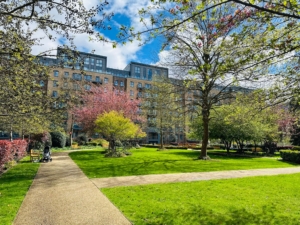
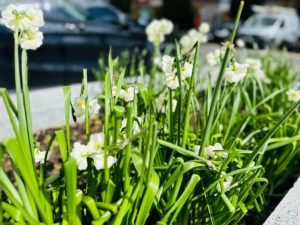
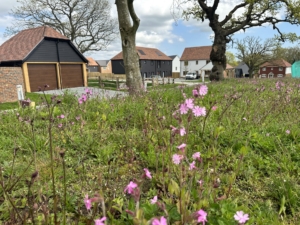
Long-Term Cost Savings
- Reduced Repairs: Regular maintenance prevents issues like overgrown plants damaging walls or paths, pests taking hold, or poor drainage causing water damage. Addressing these issues early avoids costly repairs in the future.
- Energy Savings: As mentioned earlier, well-maintained landscapes can improve energy efficiency, which lowers heating and cooling costs for the surrounding buildings.
Cultural and Heritage Preservation
- In a city like London, many mixed-use developments incorporate historical or culturally significant gardens or green spaces. Proper maintenance helps preserve the historical integrity of these areas, ensuring that they remain a lasting part of the city’s heritage.
Great landscape maintenance for mixed-use residential gardens in London not only enhances the visual appeal and property value of the area but also contributes significantly to environmental health, community well-being, and sustainable living. It provides long-term financial benefits by reducing maintenance costs and improving energy efficiency, while also supporting London’s sustainability and biodiversity goals. These gardens are vital for improving the quality of urban living for both residents and visitors. It is a pleasure to maintain many of these spaces knowing the value that they bring.


